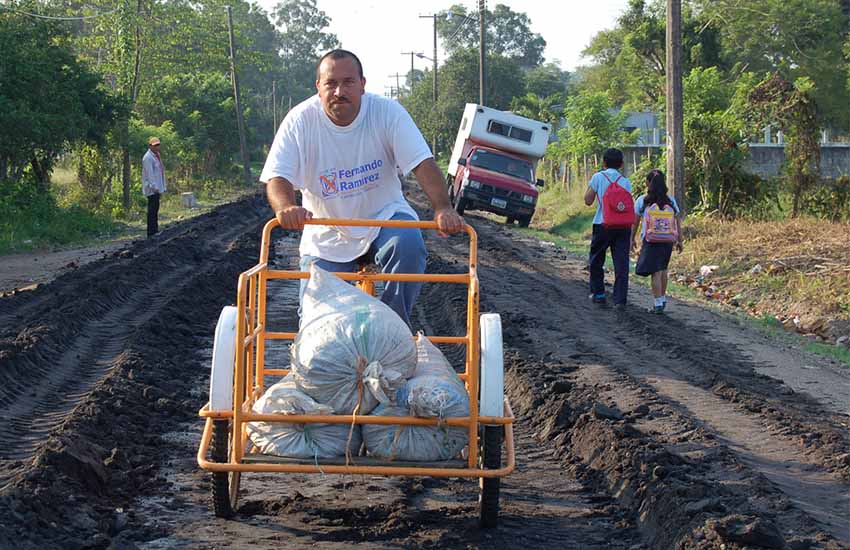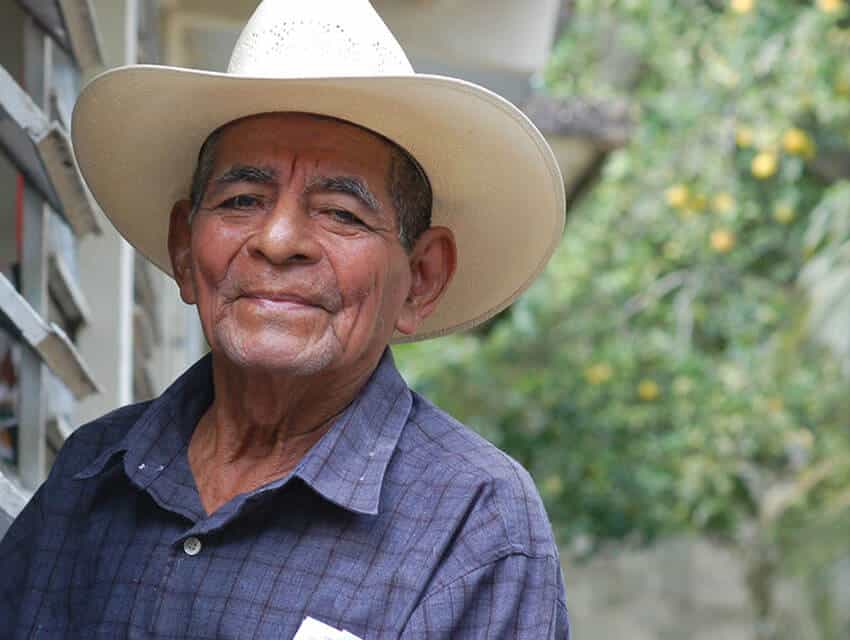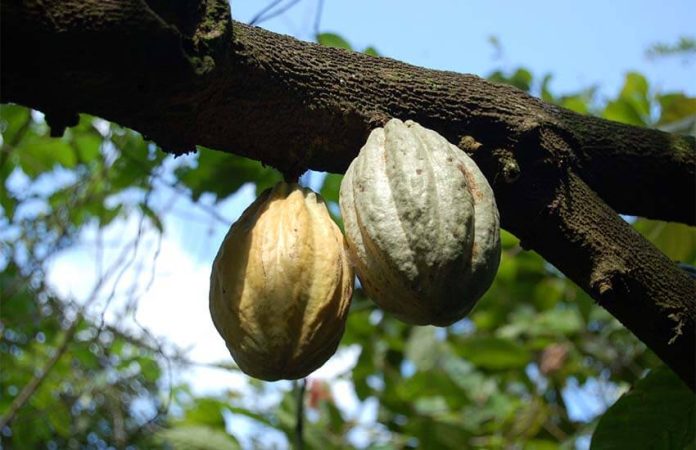José reaches up with a long stick and deftly knocks another yellow cacao pod onto the ground — the color indicating that the seeds are ripe and ready to harvest.
I am in a cacao-growing area of Tabasco, and it’s harvest time. Eventually, these bitter seeds inside the pods will be processed to become the high-quality, delicious Mexican chocolate enjoyed around the world. But right now, it’s time for José to gather and carry them to where Santan and other workers are hacking away at harvested pods with machetes to expose the white flesh inside.
The farmers gave me some seeds to eat and, at this stage, the flesh and seeds have a bitter and very slight chocolate taste. Some enjoy snacking on them. I prefer the end product.
Fortunately, a couple of millennia ago, someone figured out the multi-step process to creating the treat many still love today.

Chocolate is one of many Mexican products with a long history, stretching back to the pre-Hispanic Olmecs. Archeologists have found traces of theobromine, a substance found in chocolate, in Olmec pots dating to 1,500 B.C. The genus name given to the cacao tree is Theobroma, which translates as “food of the gods.”
Cacao knowledge was passed on to the Mayans and Aztecs, two civilizations that revered chocolate, consuming it as a drink during ceremonies. The indigenous Mexica people (Aztecs) believed that cacao was brought to them by the god, Quetzalcoatl — who, according to legend, stole a cacao tree from paradise. It’s also believed the Mexica also used the beans as money.
I spent five days in Villaflores, a Tabasco ranchería to document life in that cacao-growing region.
On my first day there, I attended a meeting of cacao growers, and it was announced that I needed a place to stay; for my photography projects, I generally show up with someone who knows the area and hope to crash somewhere for a few days. I waited outside the building as people discussed where I could stay.
Máximo, an elderly gentleman with a beautiful smile, approached and handed me a 10-peso coin.
“What is this for?” I asked.
“It is to help you pay for a place to stay,” he replied. I thanked him, returned the money and told him that I was getting a place to stay for free.
I was eventually given a small house that hadn’t been occupied for a while. A long while, in fact.
In addition to the dirt, many of the window panes were broken. The back door was made of thin metal rods through which any number of animals could fit. It housed some of the largest spiders I’ve ever seen.
“Do not worry,” I was told. “They are not dangerous.”
I fervently hoped he was right. I’m not at all embarrassed to say I slept with the (one) light on.
On my second night, I was introduced to some of the other residents occupying the house. I’d gone out to buy a couple of rolls and some cheese for dinner, and when I got back, I laid the bag with the food on a counter and went to wash up. When I returned, there was only one roll in the bag.

I was confused. I could’ve sworn I’d bought two rolls, but I figured I must have left one at the tienda by mistake. But then I leaned over the counter.
There, on the ground, sitting on that second roll, were two of the largest cockroaches I’ve ever seen. Now, I don’t know if they’d dragged that roll out of the bag but I’m telling you, they could have. “¡Provecho!” I said, leaving them to their meal.
Cacao trees grow in hot regions that have substantial rainfall, making Tabasco the perfect spot. Unfortunately, it’s also the perfect spot for insects that have nasty bites. But I was there to document the harvest, not the insects.
Once the cacao seeds are extracted, they’re shoved into large bags and taken to the warehouse in Huimanguillo, usually on heavy-duty three-wheeled bikes. Each bag weighs about 50 kilograms (110 pounds). Someone will usually pedal for about 20 minutes with two or three bags on his bike to the warehouse.
It’s there that the magic happens.
Esteban, the head of the local cacao cooperative (ALAPCH), was kind enough to give me a tour of the warehouse in Huimanguillo and explain the process to me. It was humid inside and smelled a bit like chocolate. As we walked through the warehouse, campesinos trickled in with buckets or bags of cacao seeds.
How someone figured out the steps needed to go from a bitter-tasting seed to chocolate is nothing short of amazing: to get to that final point, the seeds are first put into large vats (wooden ones in Villaflores) where they’ll sit for about a week, fermenting. The fermentation is driven by naturally occurring bacteria and yeast.
The seeds are then dried. In Villaflores, this is done by putting the seeds on a platform out in the sun, where they’re occasionally turned. This step takes a few days, depending on conditions. Once dried, the seeds are roasted and ground and are then ready to be used to make chocolate.
Tabasco produces almost 70% of the total cacao grown in Mexico. Growers in Chiapas harvest a little under 30% and others in Oaxaca and Guerrero chip in about 1%.
In the early 2000s, Mexico was producing about 50,000 metric tons of cacao, but that’s now fallen by half. Much of that decline is due to a fungus that arrived from Central America around 2006 and infected 80% of the pods. With efforts to grow resistant trees, production is beginning to rebound.
Although Mexico is where cacao was first cultivated, it currently produces only 0.01% of the world’s cacao supplies, ranking No. 8 in cacao production worldwide. The majority is now grown in Africa.
At the end of the tour, I mentioned to Esteban how much I enjoy chocolate. He told me, “Campesinos do not eat chocolate.”
I expressed surprise that the people who grow cacao don’t eat it.
“They cannot afford it. Chocolate is a luxury that only people with money can afford.”
These farmers who grow cacao earn, on average, US $2,000 to $3,000 a year — barely enough to survive. Learning that they grow cacao but can’t afford to buy chocolate made me appreciate it all the more.
Joseph Sorrentino, a writer, photographer and author of the book San Gregorio Atlapulco: Cosmvisiones and of Stinky Island Tales: Some Stories from an Italian-American Childhood, is a regular contributor to Mexico News Daily. More examples of his photographs and links to other articles may be found at www.sorrentinophotography.com He currently lives in Chipilo, Puebla.
